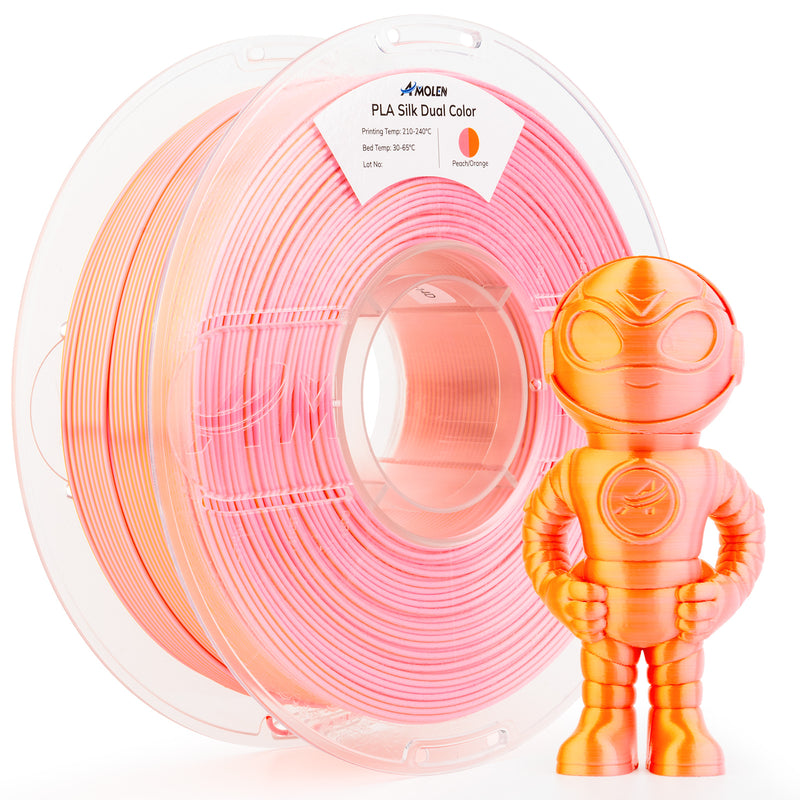Unveiling the Secrets: How to Choose the Perfect Silk PLA Filament Like a Pro!
Silk PLA filament has gained immense popularity among 3D printing enthusiasts, thanks to its striking aesthetics and ease of use. Unlike standard PLA, silk PLA offers a glossy finish that elevates printed models, making them look professionally crafted. However, with a plethora of options available, it becomes crucial to read reviews before making a purchase. Understanding the experiences of others can help ensure you select a filament that meets your project needs and expectations. In this article, we'll dive into the essential aspects of silk PLA filament, tips for evaluating reviews, and factors to consider to help you make an informed buying decision.

Understanding Silk PLA Filament
Silk PLA filament is a variation of the conventional polylactic acid filament used in 3D printing. Its unique formulation includes additives that enhance its sheen, giving printed objects a beautiful, reflective surface. This filament stands out for its vibrant colors and smooth finish, making it particularly appealing for decorative items, cosplay props, and artistic prints. The aesthetic benefits are complemented by ease of use; silk PLA typically prints at similar temperatures to standard PLA, allowing for a seamless switch for those already accustomed to using the latter. Additionally, while silk PLA is often lauded for its impressive visual characteristics, it also maintains a good level of durability and strength, making it suitable for a range of applications.
Key Factors to Consider When Choosing Silk PLA Filament
When selecting silk PLA filament, several critical aspects should influence your decision:
- Filament diameter and compatibility with printers: Ensure the filament diameter matches your 3D printer's specifications, typically 1.75mm or 2.85mm. Mismatched sizes can lead to poor prints or extruder jams.
- Print temperature and settings: Silk PLA often requires specific temperature settings for optimal results. Familiarize yourself with the recommended print temperature range to achieve the best finish.
- Color options and finishes available: Silk PLA comes in a variety of colors and finishes. Consider the visual appeal of the final product when selecting your filament.
- Print quality and strength: Research the print quality through reviews and user experiences. Knowing how the filament performs under different conditions can help you avoid disappointment in your projects.
How to Analyze Reviews Effectively
The importance of reviews can’t be overstated when it comes to making an informed purchase. Here are some tips for analyzing reviews effectively:
- Identifying consistent praise or complaints: Look for recurring themes in reviews. If multiple users mention similar strengths or weaknesses, it’s likely a reliable indicator of the filament's performance.
- Evaluating the credibility of reviewers: Pay attention to the reviewer’s experience level and the type of printer they use. A review from a seasoned user with a similar printer may carry more weight than one from a beginner.
- Understanding the context of reviews: Consider the context in which the filament was used. Factors such as print speed, temperature, and type of model being printed can greatly affect results.
Common Pitfalls to Avoid When Buying Silk PLA Filament
While shopping for silk PLA filament, be mindful of common pitfalls to ensure you make the right choice:
- Ignoring compatibility with their 3D printer: Always double-check that the filament is compatible with your specific printer model to avoid frustration during printing.
- Overlooking the importance of storage and handling: Silk PLA can be sensitive to moisture and temperature changes. Proper storage is essential for maintaining filament quality before use.
- Focusing solely on price rather than quality: While it might be tempting to go for the cheapest option, consider the long-term value and quality of the filament. A slightly higher investment might lead to significantly better prints.
Making Informed Choices for Quality Prints
Choosing the right silk PLA filament can greatly enhance your 3D printing experience. By understanding the unique benefits of silk PLA and carefully evaluating potential options, you can make a more informed decision. Always pay attention to reviews, ensuring you consider the credibility of the reviewers and the context of their feedback. Avoid common pitfalls such as compatibility issues and neglecting filament care. With the right approach, you'll be well on your way to producing stunning prints that reflect your creativity and craftsmanship.








